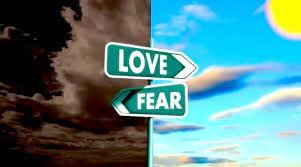A Water from the Well blog post, Parashat Ki Tavo
Written by Rabba Kaya Stern-Kaufman

In this week’s Torah portion, Ki Tavo, we are witness to a grand ritual; a dramatization depicting the landscape of choices within which we all reside at all times. One half of the Israelite tribes are told to stand on Mt. Gerizim while the other half of the tribes are to stand on Mt. Ebal. Between the two mountains lies a valley, a middle ground within which the tribe of Levi is to stand. From this middle ground of choice, the Levites call up to those on Mt. Ebal with a series of curses that will result from choices rooted in idolatry, dishonesty, greed and lust. The Levites then call up to those on Mt. Gerizim with a series of blessings that will result from choices to live a life of mitzvot, ethical behavior, honesty and support for the disenfranchised within the community.
In the teachings of the Baal Shem Tov (the eighteenth century mystic and founder of Hasidism) he expounds on the warning in Deut. 28:66 which states, “The life you shall face will be precarious…” The Besht (an acronym for Baal Shem Tov) explains this instability as an ongoing condition of life and not as a one-time curse portrayed in the drama of our Torah portion. One can never remain in the same place in relation to the Divine Mystery. We are always adjusting our closeness and our distance. The Besht gives the example of the hayot, the creatures in Ezekiel’s vision (Ez. 1:14) who dash to and fro, (ratzo v’shov) away from the Holy One and then back toward the Holy One. Motivated by love to draw closer and then by fear to retreat from the presence of the Divine, they demonstrate the ever-changing, unstable and precarious nature of our relationship with the Divine Mystery. This kind of ambivalence seems to be built into the cosmic structure of the universe and thereby it is built into us as well.
The Besht goes on to explain that in this world of flux, we cannot remain in one place. We must either move closer or further away. However, even when we move further away, we also cannot remain there for no place is permanent. There are times therefore, when moving away actually facilitates coming closer again. Often when we feel that sense of distance or alienation from the holy in our lives, from people or from community, it is easy to judge ourselves and others. The Besht provides this powerful teaching that sometimes distance is a necessary precondition for moving closer. Sometimes we need to move away in order to come closer.
We are constantly in a state of flux. Our challenge is to cultivate the awareness to recognize whether we are motivated by fear or by love in each moment.
Fear causes us to constrict, to choke our breath, to dim our light, to move away, to perceive others as threatening and resources as scarce and limited. Fear fuels conflict and competition and impedes paths toward collaboration and peace. Love causes us to expand, to draw closer and to give someone the benefit of a doubt. In this expanded state one experiences the abundance of life and can therefore appreciate that there is more than enough for everyone.
Undoubtedly, we all vacillate between these poles of love and fear all the time. In this week’s Torah portion, the Levites (the tribe charged with sacred service) stand in a valley between the mountains, in the middle space, the space of choice. While the other tribes represent the choices to move toward holiness or move away, the Levites stand in the space between, performing the sacred service of orchestrating this drama of choice. The Levites call out to us as a chorus of mindfulness. Will it be Love or Fear that fuels our choices, that animates our relationships?
While we may always fluctuate between these poles of fear and love, we can become more aware of our motivations in each situation. From the middle ground of mindful awareness, we can make conscious choices regarding how we want to respond. As we move toward the High Holidays, let us strive to be more mindful of our emotional motivations and our reactivity. Let us seek out the middle ground of choice so that we may create the kind of lasting and meaningful changes we long to see in ourselves and in our world.